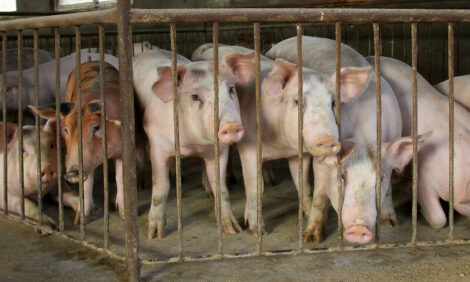



NADIS Pig Veterinary Report & Forecast - December 08
UK - This is a monthly report from the National Animal Disease Information Service (NADIS), looking at the data collected from their UK farm inspections.NADIS BPEX Commentary – December 2008
Since 1991, Porcine Reproductive and Respiratory Syndrome (PRRS) has caused serious losses to the UK pig industry and yet in global terms this country has been fortunate, so far, in escaping the far more pathogenic strain of the virus seen in North America and Asia. However, it is still a major challenge to the industry and has rightly been the focus of consideration for regional elimination.
NADIS recording over the last year continues to highlight both its widespread occurrence but also a number of features and associations of the infection.
Across the population monitored, PRRS is considered to be present in 62 per cent of farms but only a quarter of all farms recorded apply some form of vaccination policy – be that in sows or growing pigs (Graph 1).

Regionally the North East of England has the highest proportion of herds infected (73 per cent) whilst in East Anglia only a third of all herds are reported to be infected.

When taken in association with data regarding infection rates against farm type (Graph 2) and between indoor and outdoor herds (Graph 3), it is not perhaps so surprising that East Anglia with its lighter land and greater number of outdoor herds – that in themselves tend to be breeder only or breeder weaner units – has a lower percentage of farms reporting presence of PRRS.

Experience has shown over many years that separation of the breeding and feeding herds has a much greater likelihood of the virus dying out than in Breeder/Feeder herds in which the growing pigs act as a continual reservoir of infection that feeds back to maintain circulation in the breeding animals. This in itself provides the clue as to how the disease might be actively eradicated from breeding herds. On continually occupied finishing sites, whether in isolation or as part of a breeding enterprise, conversely it is very difficult to break the cycle of infection.

Both sows and growing pigs kept on slats within the monitored population are reported to have a higher percentage of farms infected with PRRS virus (Fig.4 & 5) than those kept on straw, but again this may simply reflect the geographical variation and the balance between straw and slats in the North East against East Anglia.

Perhaps most surprising, in the population under scrutiny is the fact that batch production systems (whether sows or growers) do not report a lower level of PRRS presence than continuous flow system (Graph 6). It would be necessary to look in much greater detail at individual farms to try to explain what is perhaps the opposite of what might have been expected.

This is not the first time that NADIS data has indicated that batch systems fail to deliver the health benefits often claimed, and may throw into question the application of such systems, in some circumstances.
Further Reading
| - | Find out more information on PRRS by clicking here. |






